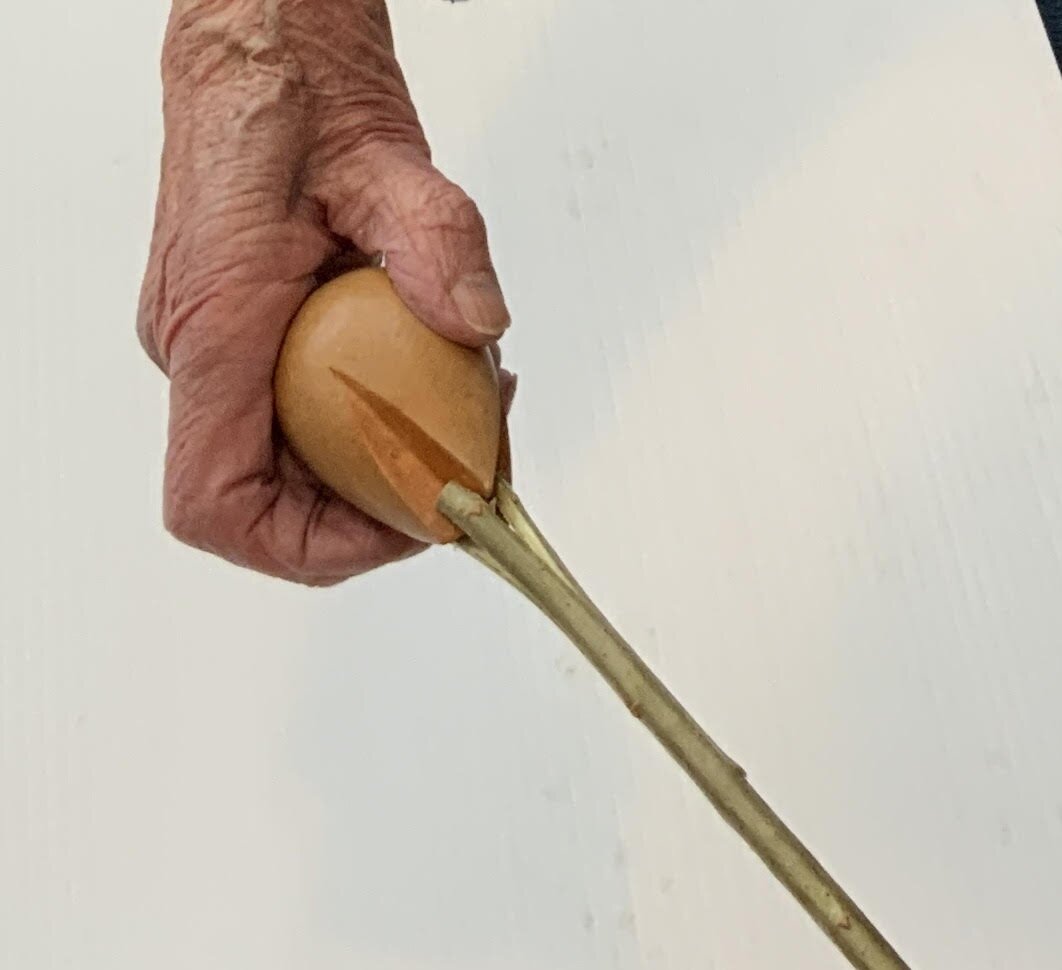Threads 14: Basketry Tools: The Cleave and the Commander
Like all ancient crafts, many tools have been invented for particular uses, and this is typical of several willow basketry tools. The cleave is one of these, it is so unbelievably efficient and so practical. Made of hardwood, it splits a rod of willow into three equal pieces lengthways. These pieces are finer and lighter and can be then trimmed down to make finer and lighter baskets.
My cleave is made of yew, probably a very ancient yew and it feels impossibly hard and strong. It fits into your hand rather like a ball, and the end is carved into three sharp points.
How to use the Cleave
At the base of a long straight piece of willow, a cut is made in the shape of a T with a sharp knife. The cleave is inserted so that each separate piece fits into each of the three sides of the Cleave (photo 1).
As the cleave is gently pushed up through the willow the three pieces divide into three equal parts. These parts are called skeins (photo 2).
Before using them, they have to be trimmed by drawing them across your knee with a sharp knife (photo 3).
The skeins can then be further refined by drawing them through two vertical knives to make each piece a similar width.
The word cleave is rather interesting, do you think it has anything to do with cleavage?
The commander or rapping Iron
This tool could also be quite a weapon! Measuring about 8 ins. long, it is very heavy and used to pack down the rows of weaving on a large basket. Because the sides are rounded the willow is not damaged. I was taught in England that this tool was called the commander, an interesting name!
Lene Rasmussen of Lakeshore Willows has a few tools for sale such as rapping iron, bodkins both straight and curved, and secateurs both small and large’.
The commander, or rapping tool.




